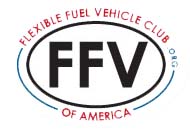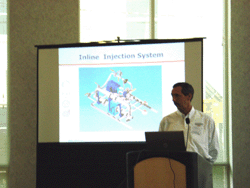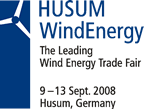 Pearson Fuels has opened their third E85 station in the state of California. The Chevron station is located at 1001 Willow Pass Court in Concord.
Pearson Fuels has opened their third E85 station in the state of California. The Chevron station is located at 1001 Willow Pass Court in Concord.
This new travel facility features a brand new Convenience Store and is the first public E85 station in Northern California. It is located directly off of Route 4 at Willow Pass Court and open 24 hours a day.
The first alternative fuel station was opened in San Diego, California by Pearson Fuels in 2003. It carried E85, biodiesel, low sulphur diesel, compressed natural gas, propane, and it hosted electric charging for vehicles in need. Many called this station, “The Fuel Station of the Future”.
“There are a lot of chickens running around,” or cars that can run on ethanol, Mike Lewis, owner of Pearson fuels once said. “And now we just need to make the eggs. I think we have the right product at the right time with the right business model. The potential upside is massive.”
Besides locations in San Diego and now in Concord, Pearson Fuels has an E85 site in Bressi Ranch. Currently, there are a total of nine E85 stations in the state of California.


 BP and
BP and  According to a
According to a  Missouri’s ethanol industry got a boost today as pro-ethanol Republican gubernatorial candidate Kenny Hulshof defeated Sarah Steelman, who had vowed to cancel the state’s new ethanol mandate. Hulshof will now face Democratic candidate Jay Nixon, who also purports to support ethanol.
Missouri’s ethanol industry got a boost today as pro-ethanol Republican gubernatorial candidate Kenny Hulshof defeated Sarah Steelman, who had vowed to cancel the state’s new ethanol mandate. Hulshof will now face Democratic candidate Jay Nixon, who also purports to support ethanol.
 A top General Motors executive believes that natural gas could be a replacement for gasoline on U.S. roads in the near future.
A top General Motors executive believes that natural gas could be a replacement for gasoline on U.S. roads in the near future. It wasn’t a huge amount, but it could be seen as an important first step for the biodiesel industry in New York.
It wasn’t a huge amount, but it could be seen as an important first step for the biodiesel industry in New York.
 The report, “The Impact of Ethanol Production on Food, Feed and Fuel,” was produced by Ethanol Across America and co-sponsored by the Nebraska Ethanol Board. The findings confirm a recent study by Purdue University, which found that record high oil prices have caused 75% of the inflation in corn prices.
The report, “The Impact of Ethanol Production on Food, Feed and Fuel,” was produced by Ethanol Across America and co-sponsored by the Nebraska Ethanol Board. The findings confirm a recent study by Purdue University, which found that record high oil prices have caused 75% of the inflation in corn prices. Mark your calendar, and check your passport because the town of Husum, Germany is set to host the world’s largest and longest-running wind energy industry trade show, HUSUM WindEnergy.
Mark your calendar, and check your passport because the town of Husum, Germany is set to host the world’s largest and longest-running wind energy industry trade show, HUSUM WindEnergy. Joel Hunter is a Penn State University Cooperative Extension Educator. “This year we tried it in kind of a big way about, somewhere between 300 and 400 acres.”
Joel Hunter is a Penn State University Cooperative Extension Educator. “This year we tried it in kind of a big way about, somewhere between 300 and 400 acres.”